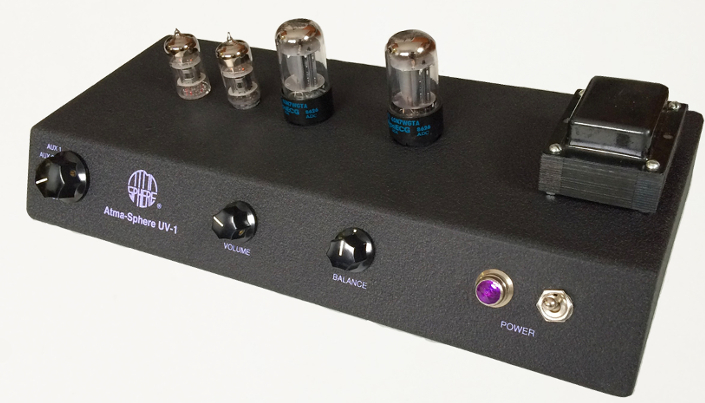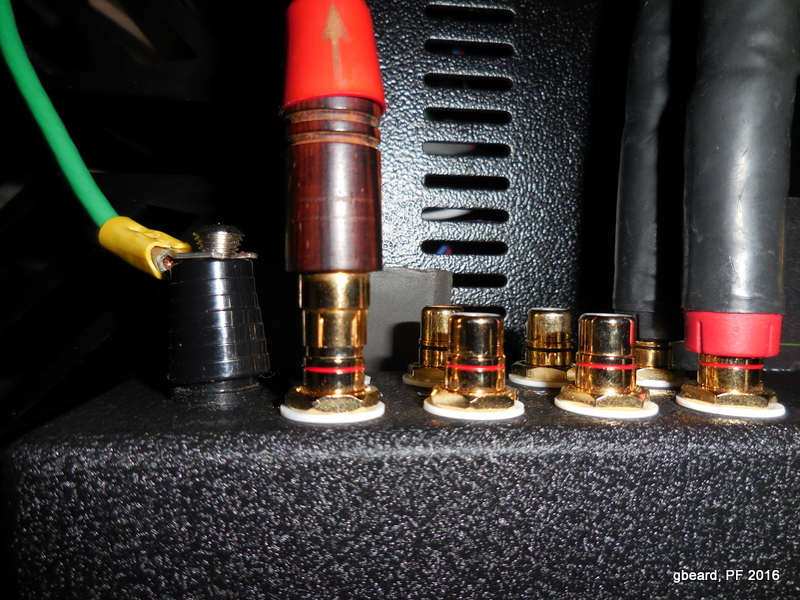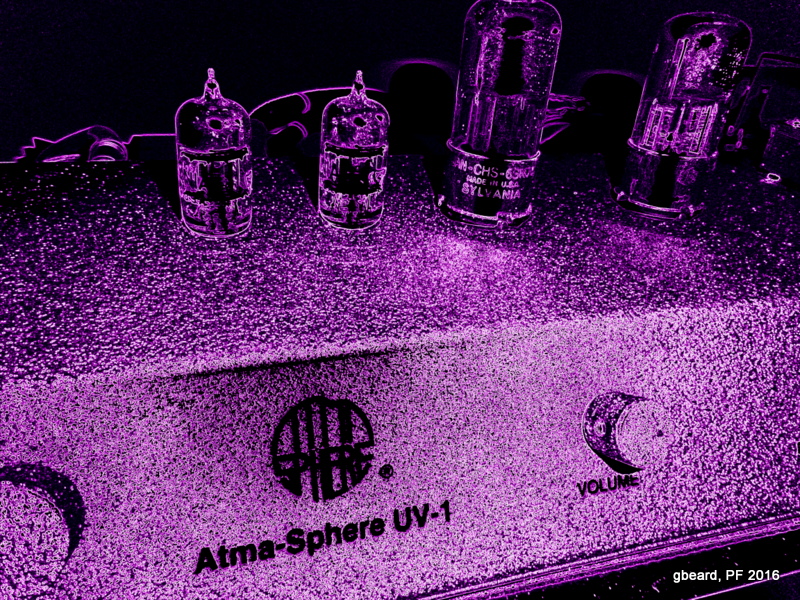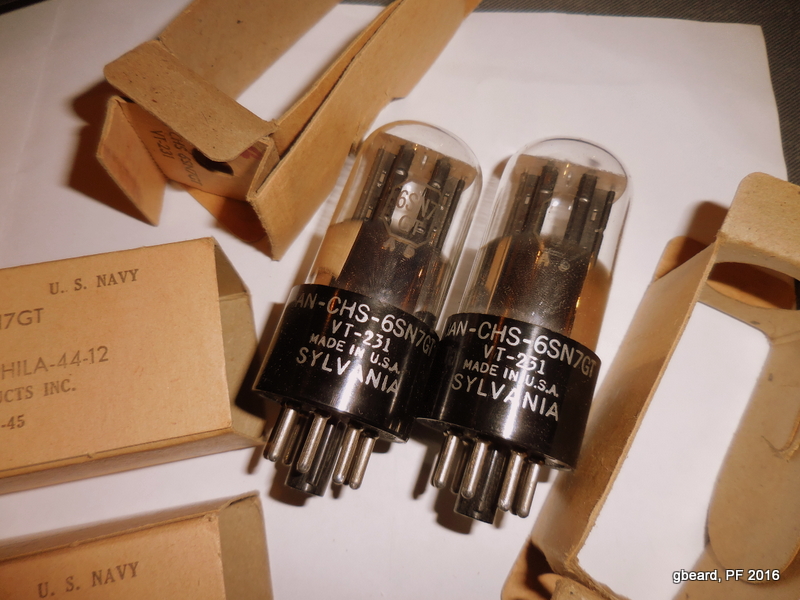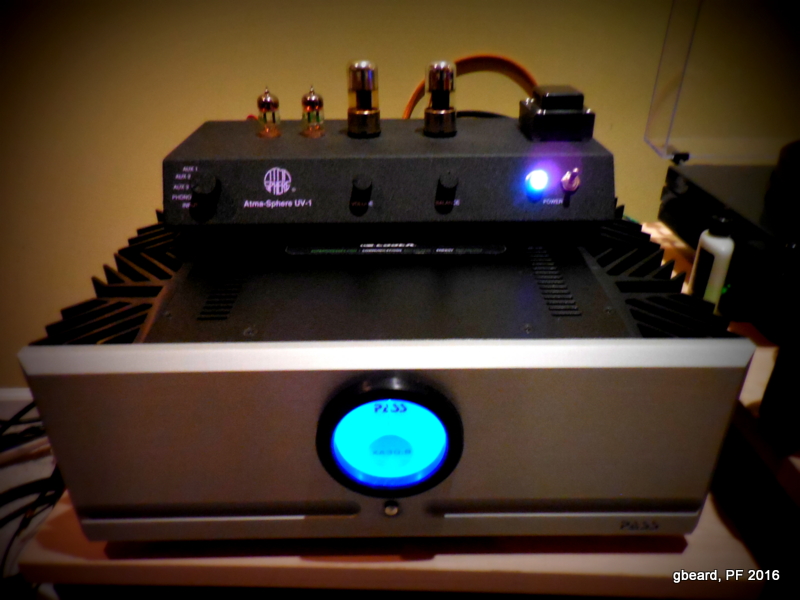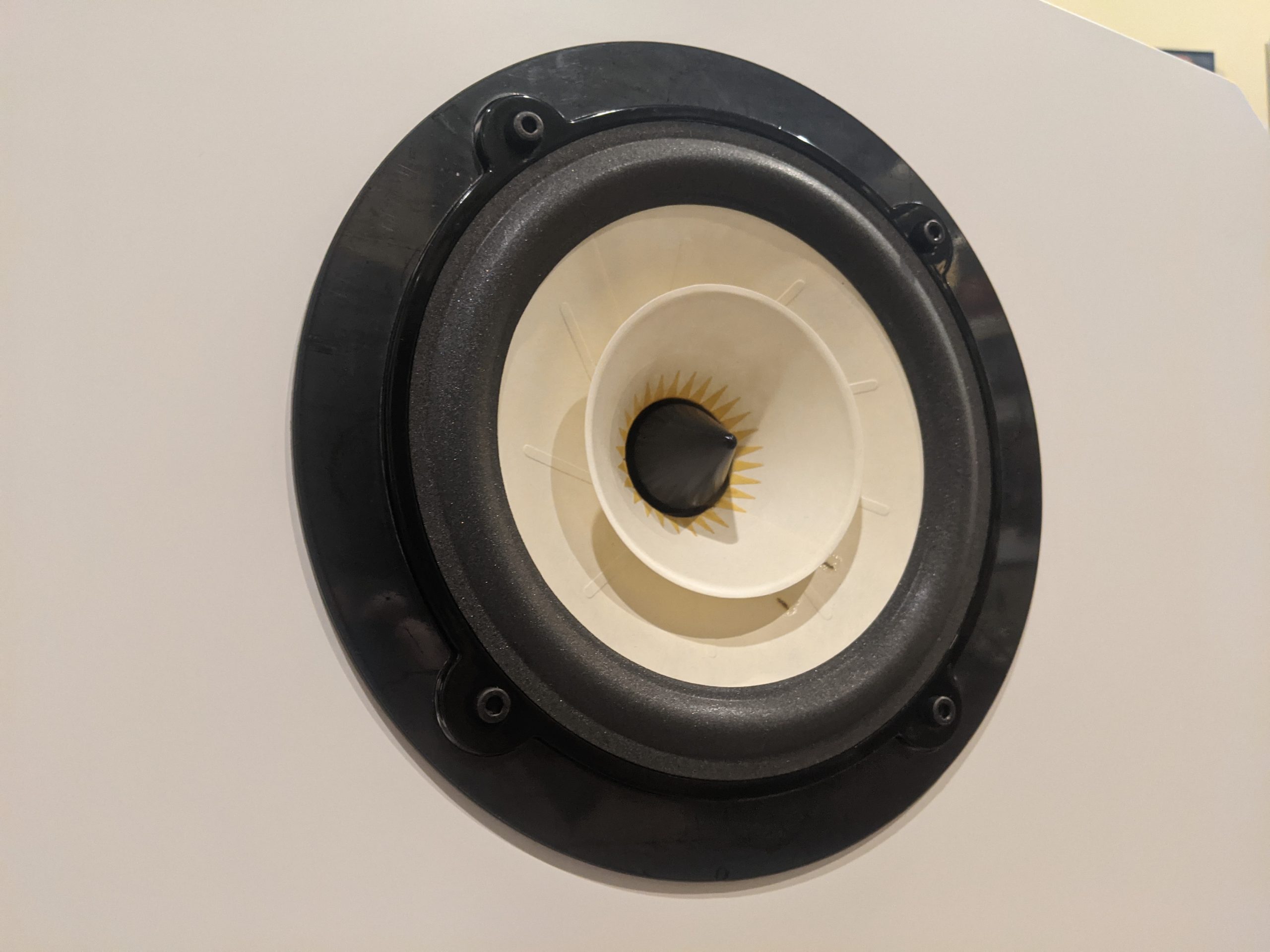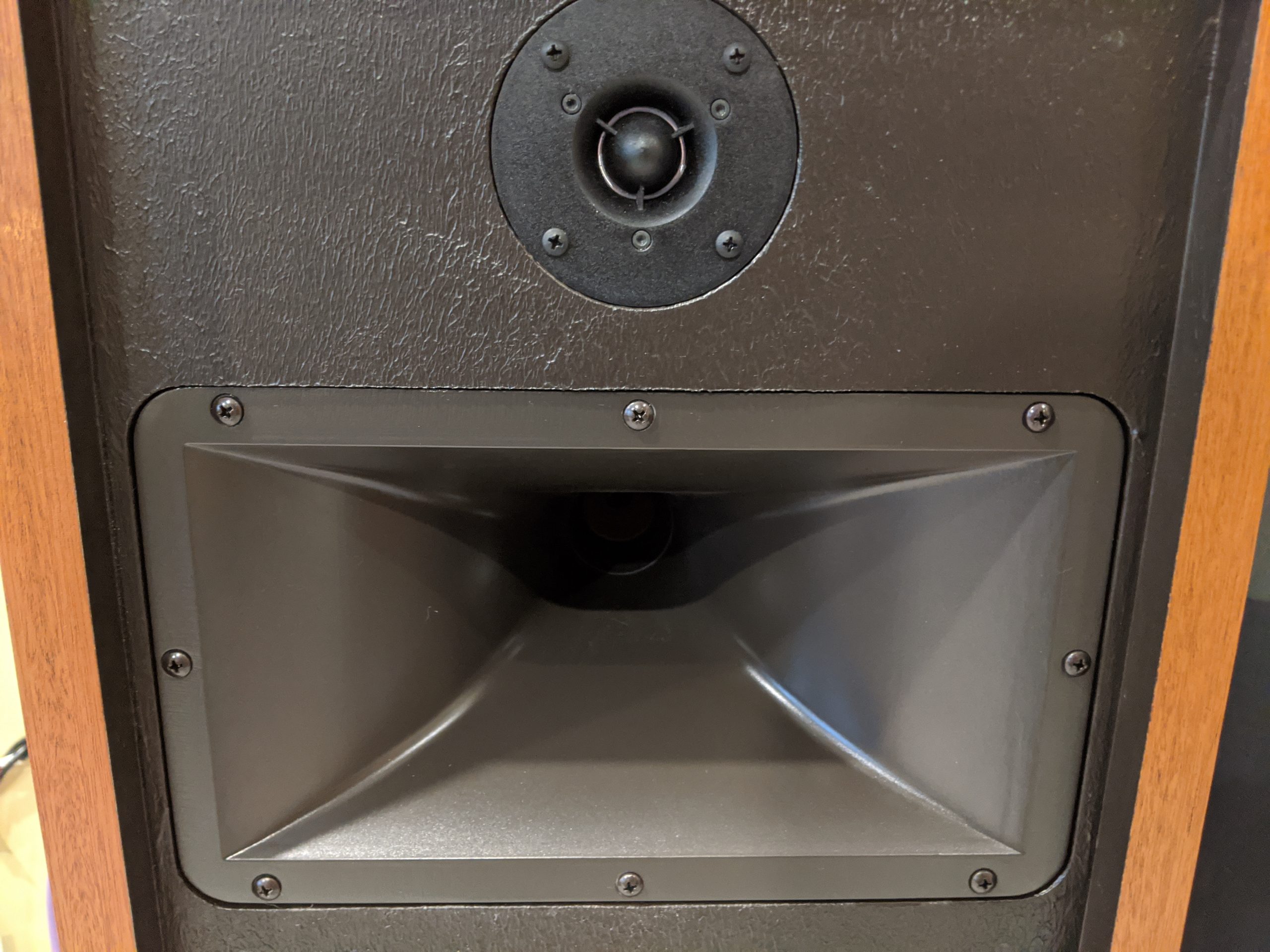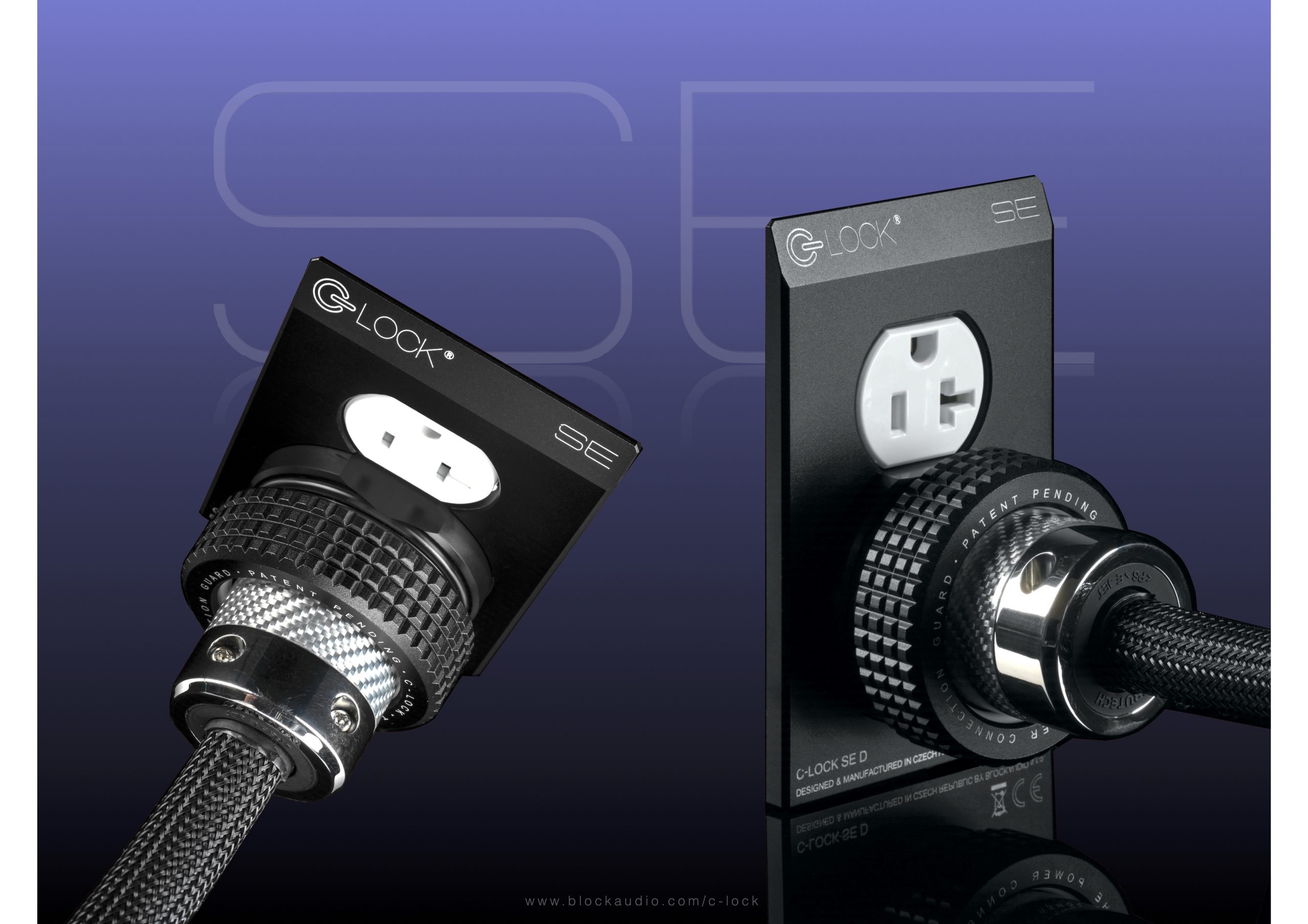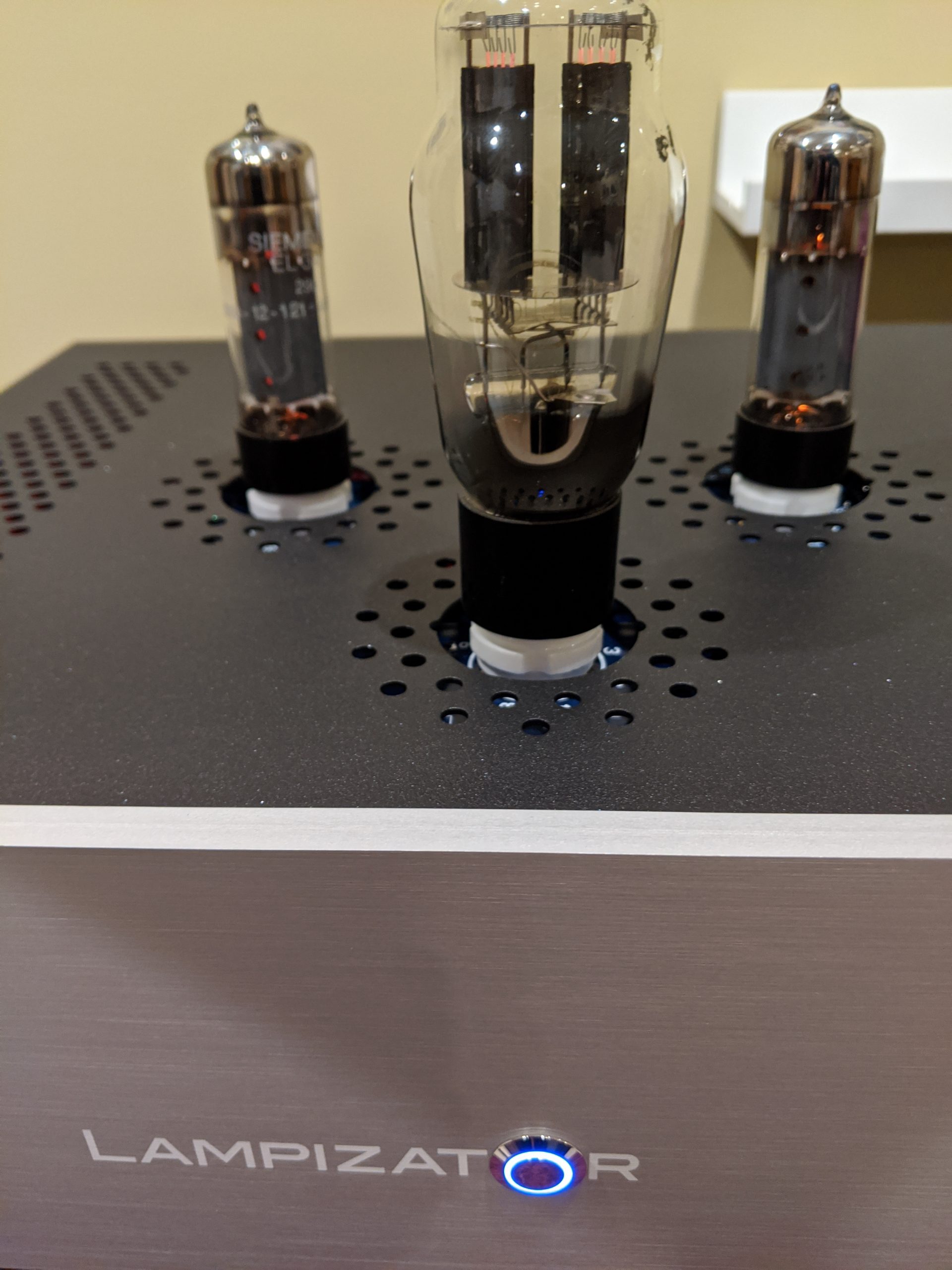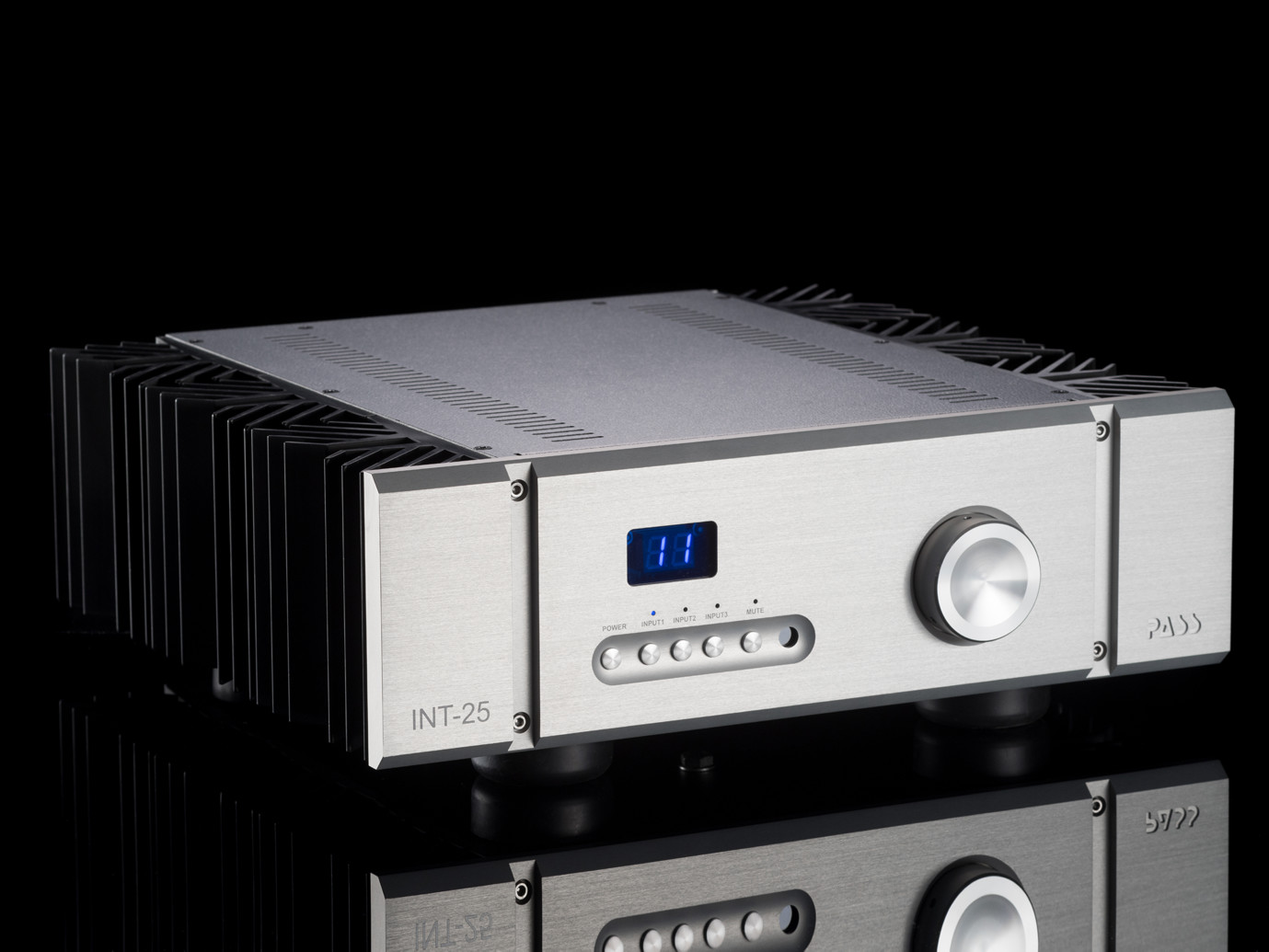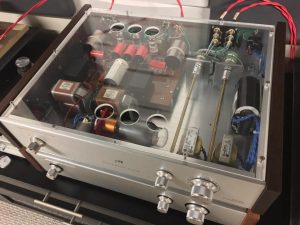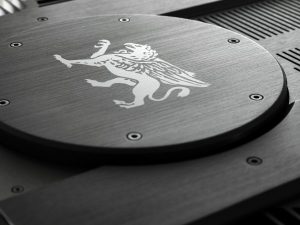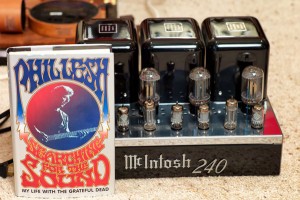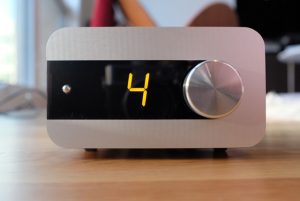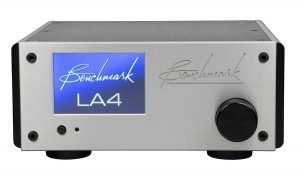Dateline St. Paul, Minnesota: Today, audio engineers observed an invisible sonic wave emanating from Atma-Sphere in St. Paul. The engineer who first discovered this new UltraViolet wavelength—nicknamed Big Tone—has officially christened it UV-1…
And that is a bald-faced lie. But Atma-Sphere has indeed, introduced a new preamp named the UV-1 that does, in fact, have Big Tone. Read on…
Catch the UV Wave
At AXPONA 2015, while visiting Essential Audio's room for a listen to AudioKinesis's Zepherin 46 speakers, I caught myself admiring, not just the big Atma-Sphere M-60 OTL amps powering them, but also the little UV-1 linestage, which was looking positively dainty-mean among the sea of big amps and speakers. A few months later, I decided to request a unit from Atma-Sphere's Ralph Karsten, who cordially agreed to allow me some time with his newest product.
The UltraViolet UV-1 preamp may look plain, but in its own heartland-ish way, it simply states, I'm all business. And that business is making music. $2800 bucks buys a UV-1 preamplifier with optional MC phono stage. (It can also be configured as a linestage, with optional MM phono, and soon may have a headphone option as well.) Of course the UV-1 is not inexpensive, but pricing is certainly not as atmospheric as many high-end preamps, so for the purposes of this narrative, let's call the Atma-Sphere UV-1 a well-priced component in an industry that routinely sees such for thousands more.
To paraphrase information I received via email from Ralph Karsten; the UV-1's basic circuit is simple: One stage of gain in the line section, direct-coupled to a cathode follower. The line inputs invert phase, but the phono input—which employs built-in Jensen step-up transformers for additional gain—does not. Ralph told me that they've been using this circuit, or a variant of it, for about 30 years in Dyna PAS-3 preamps Atma-Sphere has modified. Built on a circuit board, the UV-1 uses 1 and 2% metal film resistors, HEXFRED rectifiers, and REL-Cap polystyrene coupling capacitors. And while electrolytic capacitors are used in the power supply, their values are large enough noise cannot be seen regardless of signal level. The same custom-made hook-up wire used in other Atma-Sphere products is also used in the UV-1.
The enclosure is aluminum with the exception of the steel bottom plate used to help shield the internal components. It is finished in the now familiar black crinkly finish used on other Atma-Sphere products; and while not gleaming with shiny objects d'audio, the UltraViolet is quite beautiful in its utilitarian dress. On the top of the UV-1 are sockets for the pairs of 6SN7 and 12AT7 tubes and a small power transformer. On the rear, there are rows of Cardas RCA jacks: 3 sets of unbalanced inputs, 1 phono stage input, and 2 outputs; as well as a fuse holder, a 120v IEC power inlet (standard cord is supplied), and residing next to the phono input is the coolest spring-loaded ground post I've seen. (I admit, Ralph, it took me a minute to figure it out!)
The front of the unit features a rugged toggle power switch that operates with a reassuring clunk when flipped, and to carry on the ultraviolet theme, silk-screening and jewel bezel power "on" light are violet-hued. Also on the front, an input selector switch, volume potentiometer, and shunt-type balance control. The shunt balance control changes left/right balance in a gracefully slow way; from top dead center, moving the knob in either direction yields little change in channel balance at first, then as the knob gets closer to its left or right limit, balance changes more rapidly—hence the biggest adjustment is in the final half of the knob's range of travel. It's an elegantly useful way to help overcome off-center staging, while having finer gradients to do so. The volume control was a little less easy, as in my system, gain was a little higher than I'd normally hope for, and I only needed to about 9 o'clock on the dial in order to rock out with a 2v signal. To be sure, this is a system issue, as the potentiometer does work well, and I could find an appropriate volume setting without difficulty, especially on the phono input, which was a better match and allowed for greater range on the dial.
Sonic Radiation
When all the design tweaking, parts matching, and construction is done, the beating heart of the UV-1 are its vacuum tubes. Atma-Sphere chose the celebrated 6SN7, a medium gain, dual-triode, 8-pin octal, for the linestage, and opted for the 12AT7, a 9-pin dual triode also with a medium gain, in the phono. I'm not as familiar with the 12AT7, but the 6SN7 has been a long-time favorite, and one that I have used in several amps I've owned. There is one thing I've learned about this glowing glass bottle, when properly implemented, it has, as tube-o-philes (and fake scientists) like to say, Big Tone.
Spoiler alert: It is properly implemented in the UV-1.
In my experience, the sound of the linestage is slightly darker than neutral and a little sweet too, but it is never syrupy or overtly recessed. No rosy Ray Ban's needed here. And while the midrange offers up abundant tonal color and instrumental texture, bass and treble are very good too. The lowest octaves are generally tight and well defined, with perhaps an occasional moment of bloat on bass heavy tracks. Mid-bass through the lower midrange is especially dynamic, and I could easily follow and feel muscular bass guitar notes and sense the percussive pop of the sticks against the drumheads.
Sonically the UV-1 is centered between the two extremes, and the sound is a more contemporary take on vintage than I expected. Curiously enough, I find the UV-1 fast. Yes, perhaps surprisingly, this tube preamp is quick on its rubbery feet. Perhaps it's the single gain stage, maybe it's the fast recovery HEXFREDS in the power supply; but whatever the reason, it is certainly a result of Mr. Karsten's functional design. The UV-1 is not quite as transparent as my reference passive and it lacks the pin-point focus and ultimate inner-resolution of the best I've heard. I am nit-picking of course, and as a reviewer, I should be, yet I must also point out that listening to the UltraViolet is a complete delight, and it is quite difficult to quit a listening session.
It probably comes as no surprise that the attributes I admire most about the UV-1 are those typically associated with the sound of vacuum tubes. The soundstage is huge; extremely wide and reaching out toward the listener; while still rendering very good depth. Imaging is quite engaging, with players and voices solidly in space, and lots of air surrounding them. It is detailed, but not so much that it detracts from the cohesiveness of the music. And of course, since the UV-1 is big tone 6SN7 design, the midrange is impressive. Initially, the treble was a bit hard and grainy in the upper extremes, especially with the stock tubes, but as I put more time on the UV-1 and experimented with other tubes, it smoothed out considerably.
Can you say tube rolling?
Normally, I like to write about tube gear using the stock tubes, at least for a while. The preamp is supplied with Chinese tubes, and they're pretty good, but I also rolled my own (tubes) to excellent effect. And it is as a tube rollers dream where the UltraViolet shines its light the brightest. Ken-Rad black glass VT-231's had a glorious midrange, but a bit too much low-end emphasis. I wound up finding a great fit with a pair of Sylvania 6SN7GTA's. They sounded splendid through the entire range of frequencies. Toward the end of my audition, I rolled in my golden children; a pair of 1945 Sylvania VT-231's, and then my last remaining pair of the legendary Sylvania 6SN7W Metal Base. The VT-231's sounded wonderfully balanced and the nearly unobtainable Metals were like midrange-angels sweetly singing. The differences from stock were so pronounced; I would expect tube rolling to be an important and enjoyable part of using the UV-1.
Phono Home for Added Value
It was really nice to have the wee UV-1 preamp around for a while, especially since it included a phono stage, as I certainly prefer fewer boxes. The moving coil phono section of the UV-1 was slightly noisier than the linestage inputs, but I found the level of noise was clearly tube dependent, so I rolled in a pair of Sylvania 12AT7 tubes that nearly equaled the line inputs in quietness. The 12AT7 tubes and built-in Jensen step up transformers worked very well with my .60 mV output, Lyra Delos.
The UV-1's phono was brighter and seemed more detailed than the linestage alone, but still had the same vivid 3D stage. Weather Report's "Birdland" from the Heavy Weather album, was alive, layered and driven. The various hand claps, background singers, bass, and synth, were easy to pick out individually, but also meshed into a beautiful musical mix. Depth was particularly excellent. All through this fantastic record, I heard languid cymbal touches with appropriate ring and decay, lovely tone of both sax and piano and bass lines that were upfront, center and deep. The UV-1 MC phono has wonderful tonal shading, big dynamics swings, and great separation of instruments. It is a fine phono stage, and equaled the enjoyment I get from my Wright WPP100C. The $900 dollar premium for this option is, in my opinion, money well spent if you are looking for a one box preamp solution.
A Versatile Component
In addition to driving my reference Pass XA 30.8, I also used the UV-1 with two other amplifiers, my own DIY clone of a Firstwatt F4 and the Benchmark Media AHB2.
The F4 clone provides no gain of its own; so I had full use of the UV-1's entire volume range, but because the F4 requires a fair amount of voltage swing to sound its best, there was not quite enough oomph to drive my 90dB, 8Ohm, loudspeakers to loud levels on rock and full orchestra classical music. Still, the combination proved extremely quiet, and certainly made beautiful music, especially on vocals, acoustic, and small combo jazz. With a more efficient speaker, I think the two just might make audio magic.
The UV-1 and the AHB2 turned out to be great musical companions. I was lucky enough to have Benchmark Media's DAC2 HGC on hand too, and these three components together can put you in the Oh! Zone layer. (Sorry, I couldn't resist.) The UV-1 was ear-to-cone quiet on the AHB2 amp's mid-sensitivity setting, and allowed the Benchmark amp to show the Ultraviolet at its best. As with the Pass, there was marginally more noise on the phono input, but while listening to it through the AHB2, the phono stage really came into its own. I originally thought the phono was tilted up a bit too much for my taste. Ralph Karsten had told me that it took a while for the unit to burn in, but boy-howdy, was I surprised. I always use Joe Jackson's Body and Soul as a review LP. It is a well recorded, terrific performance, and the UV-1 rendered it with an emotive, yet forceful, glow.
Ones and Zeros
With the UltraViolet in the digital chain, recordings took on a richer, tonally weightier sound. Christine McVie's piano on Fleetwood Mac's "Songbird" was lovely, and even early 1960's recordings like Shelly Fabares' "Johnny Angel" proved an easy listen. A little tube burnishing of the sharp edges of musical notation can be a good thing sometimes. The visiting Benchmark DAC2 HGC also fell in love with the Atma-Sphere pre. Any audiophile that has swapped gear in and out has had what I call the "Synergy Epiphany". Every once in a great while, a motley crew of electronic circuits comes together to form a partnership of sonic adoration; irrespective of cost or categorization, said components just sound right. The respective strengths of the Benchmark DAC and the UV-1 immediately gelled. Power, finesse, staging, and excellent resolution; this combo made music.
Quibbles, Sonic Bits, and that's a Wrap
Regarding tubes and noise: I've had tubes in my system for years, but lately, except for my phono stage, I've been passively solid-state. There was a little noise with the UV-1, but after getting the location, cables, and tubes dialed in, the slight hum/buzz that remained was minor—a few inches from the speaker—and from the seated position with no music playing, there was naught but silence. In my system, the UV-1 did seem to like being turned up a bit, but again, with my Pass XA-30.8, I had less usable volume range than I would have liked and loud, got very loud, very quick. This is system dependent, of course, and no ding to the UV-1.
The UV-1's dynamic and weighty immediacy never failed to draw me in to the music, and I especially enjoyed its ability to throw a spacious, well lit, stage. It is, perhaps, a tube purist's preamp (or conversely, it may fashion you into a tube purist). Don't let its small size and Spartan looks fool you; it is a serious audio component that is quite adept at conveying the musical message, and ultimately, that what most of us are looking for, isn't it?
Atma-Sphere UltraViolet UV-1 Preamp
Linestage with MC Phono Stage: Retail $2800 USD (As tested)
Linestage only: Retail $1900 USD
Linestage with MM Phono Stage: Retail $2400 USD
Atma-Sphere Music Systems, inc.
1742 Selby Avenue
St. Paul, MN 55104
(651) 690-2246
Specifications
- Line stage frequency response: 2 Hz-200 KHz, +0 dB, -2dB
- Line stage gain: 15dB
- Line stage input impedance: 100 Kohm Ω single-ended
- Line stage output: 12V; 17VRMS at clipping
- Output impedance: 400 Ohms from 2Hz to 100KHz
- Phono stage input impedance: 47 K Ω,
- Phono stage input overload: 500 mV
- Phono stage gain: 70dB (Low Output Moving Coil version)
- Phono bandwidth: 5 Hz-90 KHz within ½ dB
- RIAA accuracy: Within .1dB
- RIAA Phono sensitivity: (for 0.5 V @ 1 KHz) 0.15 mV
- Tube complement: 2 x 12AT7 phono section, 2 x 6SN7GT line section
- Dimensions: 15 3/8" wide x 7.5" deep x 5." high
- Weight: 7 lbs.
- Warranty: Three years, transferable. One year for tubes.
Manufacturer's Comments
Thanks for the comments!
-Ralph Karsten
CEO, Atma-Sphere Music Systems, Inc.




